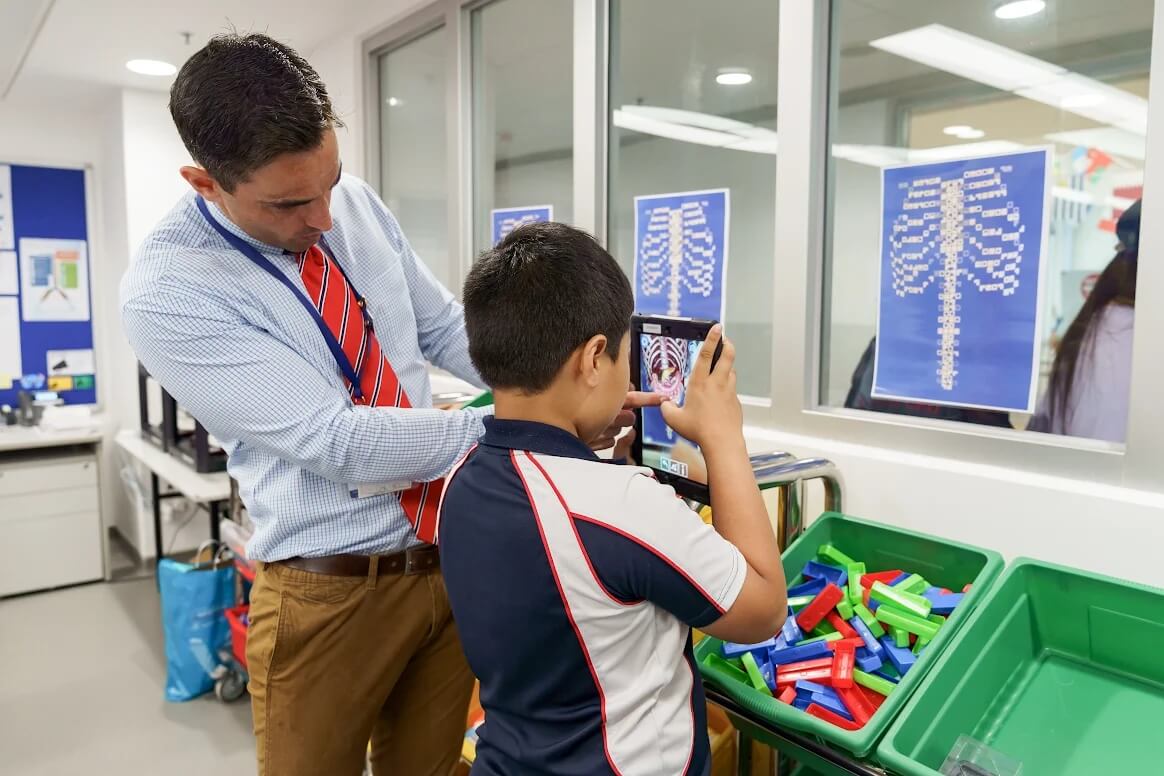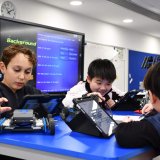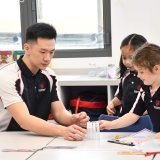Technology and the Forward Thinking Stamford Curriculum
The subject of ICT (Information and Communication Technology) underwent a tremendous transformation in the past decade. ICT educators have come a long way from conducting classes in “computer labs”, and are now revolutionizing schools with new mediums as well as a new mindset to teach and learn.
Our Education Technology Coordinator, Mr. Tim Evans, discusses how education technology shaped the forward-looking curriculum at Stamford and continues to offer new and exciting learning opportunities beyond the traditional confines of a classroom.
“I witnessed the introduction of iPads to school, from one or two devices per class to what is now known as a 1:1 iPad program. With this came the evolution of teaching and learning. By equipping students with their own device, students are empowered to take ownership of their learning – researching and co-creating knowledge and contents, all the while developing and acquiring essential, future-ready skills along the way.” – Mr. Tim Evans
Q: Is “Future-focused education” just a buzzword or the real deal?
It is the responsibility of educators to make sure students are ready for the world beyond their education, in life and in work. We have all seen how digital technologies have transformed our societies over the past decades. The recent school closure due to COVID-19 is the perfect case in point that our world is filled with uncertainties and disruptions and that the traditional classroom approach to learning needs to adapt. As a forward-thinking school, we asked ourselves “what kind of education experience do we offer our students so that they will rise to the unpredictable challenges of the future?”
The answers were obvious. Our future requires individuals with higher-order thinking skills such as complex problem-solving, critical thinking and creativity, among other “soft skills” that can’t yet be mimicked by artificial intelligence.
We then mindfully integrated technology in the learning journey to engage our students so they can develop soft skills: be it as a collaboration tool for a group project, a coding tool to encourage problem-solving, or a communication tool to connect with fellow students from around the world. Essentially, the technology is there to support learning, and not drive learning. Technologies will come and go, as we have seen in the past, and are witnessing daily, whereas these important soft skills will be around for a long time.
Q: What does that look like at Stamford? How is teaching and learning different here?
Technology has found its way into all areas of studies, and all grades. For example, we have secondary students designing 3D elements that will later be used in an Augmented Reality movie that they will script, create and edit. Elementary students may use Virtual Reality headsets to visit the Grand Canyon and Mount Everest, as they learn about erosion. Even our 5-year-old Pre-primary students use Cubetto and Bluebot robots to learn the concept of coding and programming.
One of the benefits of being part of the wider schools group is the opportunity to collaborate with other students and schools. “Cognita Calling” Skypathon and “Share A Story” were two such group-wide collaborations made possible by technology. “Share A Story” saw our students contribute to a storybook project where each chapter was written by a different school – it was great fun watching the plot evolve!
As educators, we want to lead by example and explore new technologies with our students. We are blessed with a team of forward-thinking, innovative educators here at Stamford. Which is why there is always something exciting going on.
Ultimately, we know that the knowledge, skills, and understanding will continue to benefit students in their life. No matter what career they pursue, our students will be up for the challenge!






